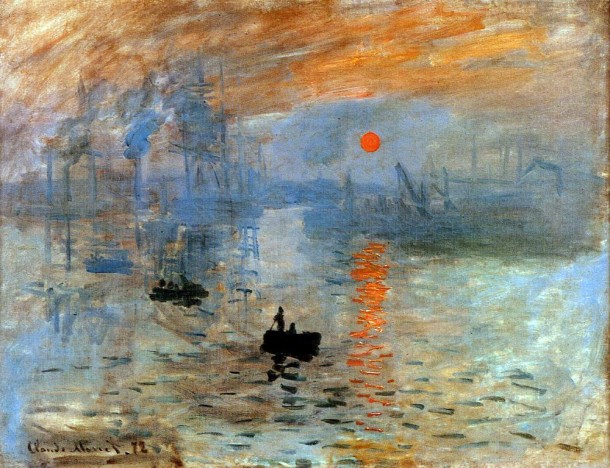Impressionism can be considered the first distinctly modern movement in painting. Impressionist art is a style in which the artist captures the image of an object as someone would see it if they just caught a glimpse of it.
Impressionism is a 19th-century art movement that originated with a group of Paris-based artists whose independent exhibitions brought them to prominence during the 1870s and 1880s. Impressionist painting characteristics include relatively small, thin, yet visible brush strokes, open composition, emphasis on accurate depiction of light in its changing qualities (often accentuating the effects of the passage of time), ordinary subject matter, inclusion of movement as a crucial element of human perception and experience, and unusual visual angles. A French 19th century art movement which marked a momentous break from tradition in European painting. In the middle of the 19th century—a time of change, as Emperor Napoleon III rebuilt Paris and waged war—the Académie des Beaux-Arts dominated French art. The Académie was the preserver of traditional French painting standards of content and style. Historical subjects, religious themes, and portraits were valued; landscape and still life were not. The Académie preferred carefully finished images that looked realistic when examined closely. Paintings in this style were made up of precise brush strokes carefully blended to hide the artist’s hand in the work. Color was restrained and often toned down further by the application of a golden varnish.
Impressionism emerged in France at the same time that a number of other painters, including the Italian artists known as the Macchiaioli, and Winslow Homer in the United States, were exploring plein-air painting. They paint the pictures with a lot of color and most of their pictures are outdoor scenes. Their pictures are very bright and vibrant. The artists like to capture their images without detail but with bold colors. Its originators were artists who rejected the official, government-sanctioned exhibitions, or salons, and were consequently shunned by powerful academic art institutions. In turning away from the fine finish and detail to which most artists of their day aspired, the Impressionists aimed to capture the momentary, sensory effect of a scene – the impression objects made on the eye in a fleeting instant. To achieve this effect, many Impressionist artists moved from the studio to the streets and countryside, painting en plein-air. Some of the greatest impressionist artists were Edouard Manet, Camille Pissaro, Edgar Degas, Alfred Sisley, Claude Monet, Berthe Morisot and Pierre Auguste Renoir.
The Impressionists faced harsh opposition from the conventional art community in France. The name of the style derives from the title of a Claude Monet work, Impression, soleil levant (Impression, Sunrise), which provoked the critic Louis Leroy to coin the term in a satirical review published in the Parisian newspaper Le Charivari.
“Impressionism is only direct sensation. All great painters were less or more impressionists. It is mainly a question of instinct.” Claude Monet
Impressionism was a style of representational art that did not necessarily rely on realistic depictions. Scientific thought at the time was beginning to recognize that what the eye perceived and what the brain understood were two different things. The Impressionists sought to capture the former – the optical effects of light – to convey the passage of time, changes in weather, and other shifts in the atmosphere in their canvases.
Edouard Manet influenced the development of impressionism. He painted everyday objects. Pissaro and Sisley painted the French countryside and river scenes. Degas enjoyed painting ballet dancers and horse races. Morisot painted women doing everyday things. Renoir loved to show the effect of sunlight on flowers and figures. Monet was interested in subtle changes in the atmosphere.
What characterises Impressionism for most people nowadays, is both the subject matter and the technique. Landscapes, and scenes from modern urban and suburban life painted in bright, pure colors are typical. Impressionists often began (and sometimes completed) their paintings outdoors rather in a studio.
The Impressionists, however, developed new techniques specific to the style. Encompassing what its adherents argued was a different way of seeing, it is an art of immediacy and movement, of candid poses and compositions, of the play of light expressed in a bright and varied use of color.
Today, the Impressionist paintings are some of the best-known and best-loved in the collection. It takes a leap of the imagination for us to realise how radical the movement was considered in its day.

